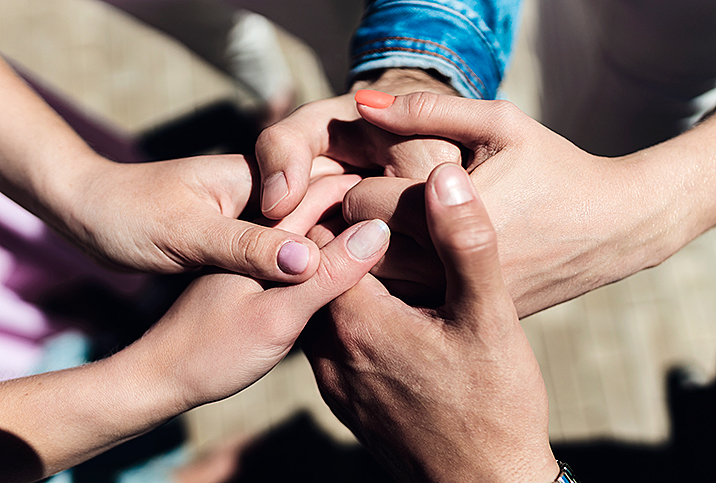Polyamory: Myths & Misconceptions

Polyamory, which is the practice of engaging in multiple, consensual intimate relationships at the same time, is beginning to reach the mainstream masses for the first time. In fact, estimates show that 4 to 5 percent of people in the United States engage in this type of relationship structure.
Because monogamy is generally considered the desired "norm," people who are new to the concept of polyamory may harbor many misconceptions about the practice. Let's debunk some of the most common myths.
Myth: Polyamory means one man having more than one wife.
Reality: There are many words describing relationships that begin with the prefix "poly"—such as polygyny and polygamy—but that's where the similarity ends. Whereas polygamy and polygyny are defined as marriage to more than one spouse, the practice of polyamory is very different and may or may not include marriage as part of the relationship.
Myth: Polyamory is just about sex.
Reality: Polyamory can be about sex, but it can also be about forming relationships and exploring other forms of intimacy.
It's true that polyamory may be mostly sexual in nature for some people, but for most polyamorists, this is about so much more than hookups and flings. Polyamorists desire full-fledged, meaningful relationships with more than one person which may or may not involve sex. In fact, polyamorists on the asexual spectrum, whose relationships often don't involve sex at all, are not uncommon.
Many people also incorrectly assume that if someone has multiple partners, they are all having sex with one another, especially group sex. In reality, just because a person is dating two people, for example, that doesn't mean those two people are also in a sexual or romantic relationship with one another. While polyamorous individuals may find more opportunities for group sex than a monogamous person, being polyamorous doesn't have to equate to any greater interest in group sex.
Myth: Polyamorists are afraid of commitment.
Reality: Polyamorists simply don't equate sexual and romantic fidelity with commitment. The idea that nonmonogamous people avoid commitment rests on the assumption that commitment is based on sexual and romantic exclusivity. However, a polyamorous relationship may instead be defined by the people involved in it, and exclusive commitment simply isn't part of that definition.
Polyamorous people may have relationships with multiple people that include varying levels of commitment and entanglement. And just like monogamists, polyamorists may have dreams and goals about their relationships that include marriage, children, cohabitation and other forms of commitment.
Myth: Polyamorists are more likely to have STIs.
Reality: Polyamorists tend to be more proactive about their sexual health than many people. Sex with multiple people comes with some inherent risk of getting a sexually transmitted infection (STI). However, because a polyamorist's sexual health has the potential to affect a larger network of people, frank conversations around STI history, barrier use and birth control are expected and commonplace in polyamorous relationships. Current research even shows that openly nonmonogamous individuals tend to be much more serious about safer sex than individuals who practice nonconsensual nonmonogamy, such as cheating.
Myth: Polyamory doesn't work.
Reality: Polyamory is just as likely to work as monogamy. When a polyamorous relationship ends, many people are quick to point to polyamory as the root of the problem and classify the failure as evidence that polyamory can't possibly work. However, most people will have multiple monogamous relationships throughout their lives, and statistics show that roughly 40 percent of marriages in America end in divorce. Yet monogamy itself is rarely blamed for these failed relationships. Just like with monogamous relationships, polyamorous relationships may end for a variety of reasons, such as incompatibility, changing feelings or communication issues.
Of course, for every stereotype about polyamory, there is someone out there whose actions support those stereotypes. However, it's important not to generalize about the entire polyamorous community based on the actions of a few. In reality, polyamory looks different for each person who practices it. Negative stereotypes about polyamory harm people who choose this relationship structure and can result in discrimination against them.
By exploring what polyamory truly means for those who practice it, you will learn that polyamory is about loving freely, communicating openly and practicing vulnerability.

















